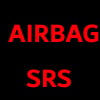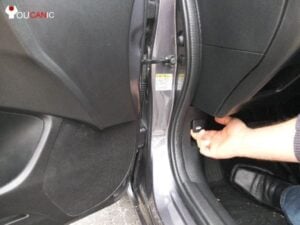Honda Dashboard Warning Lights and Symbols
Is there a warning light appearing on your Honda dashboard? Learn the warning light’s meaning and the possible solutions to fix the problem by checking the list below.
Honda Dashboard Warning Lights and Symbols
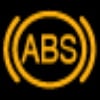
Anti-lock brake System Fault Indicator This light means that the anti-lock brake system has been disabled. The problem is mostly due to a bad ABS wheel speed sensor. While the vehicle can be driven, the anti-lock brake function is disabled, and the vehicle may take longer to bring to a complete stop and may skid under hard braking or if there is rain or snow on the road. To find out why your Honda ABS light is on, use an ABS scanner to read the fault codes from the ABS Control Module. Generic OBD-II scanners may not be able to read airbag scanners. |
|
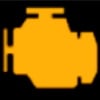 
The check engine light or service engine soon light comes on when the onboard diagnostic system detects a problem with either the engine, emission system, or transmission. Common problems that cause the check engine light to stay on include: loose gas cap, bad oxygen sensor, dirty Mass Air Flow (MAF) sensor, A fault code gets stored in the Engine Control Unit (ECU) and can be retrieved with an OBD-II scanner to determine what is wrong with the vehicle. |
|
|
Air Bag Warning Light The airbag light turns on when you first turn on the ignition, but after a quick system check, it turns off if all the airbag components function properly. If the airbag light stays, it means the airbags have been disabled and may not deploy in case of an accident. To troubleshoot the airbag light on a , you will need to read the fault codes with an airbag scanner. |
|
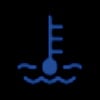 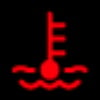
Engine Temperature Indicator This is the warning symbol indicating that the engine has overheated. Pull over immediately and shut off the engine. Wait at least 30 minutes or more for the engine to cool down fully. Once the engine cools down, check the engine coolant level. Common problems that cause a Honda engine to overheat include low coolant level, bad water pump, broken coolant hoses, a faulty thermostat, damaged heater core, etc. If the engine overheating continues, do not drive. Call an auto mechanic for advice or tow the vehicle to an auto repair shop near you. |
|
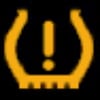
Tire Pressure Monitor Indicator This light means there is low tire pressure in one of the tires. Check the tire pressure and correct it to bring it to the recommended air pressure, as shown on the sticker on the driver’s door frame. If the TPMS light stays on after you add air, there may be a problem communicating with one of the TPMS sensors, or the TPMS system is faulty. |
|

Charge System Trouble Indicator The battery warns the driver there is a problem with the charging system. If the battery light comes on, the vehicle may shut off when driving. The battery warning light can be caused by a faulty alternator, a serpentine belt problem, a defective voltage regulator, and even a bad battery. |
|

Low Washer Fluid Indicator This light means that the fuel level is low. Add windshield washer fluid to the reservoir in the engine bay. The windshield washer fluid reservoir has the same symbol on top. |
|
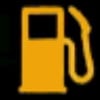
Low Fuel Indicator This light means that the fuel level is low, and you need to add more fuel. |
|

Oil Warning Light This light means there is alow oil pressure. Pull over immediately and shut off the engine. Wait at least 5 minutes, then check the oil level with the engine off. If the oil level is low, add engine oil to bring the level between the MIN and MAX marks of the dipstick. Do not drive the vehicle or keep it running on idle if the oil light stays on. Doing so can lead to serious engine problems. Call an auto mechanic for advice or tow the vehicle to a repair shop nearby. |
|
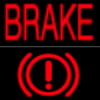
Brake Light This light indicates a problem with the brake system. It could be due to a low brake fluid level or another issue with the brake system. Do not drive with the BRAKE light on. Brakes may not work or function properly. Call an auto mechanic for advice and, if needed, tow the vehicle to the closest auto repair shop. |
|
 
Economy Mode Operation Indicator In economy mode, the vehicle will adjust engine and transmission performance for the best fuel economy. For example, engine RPMs don’t reach high values, and transmission may shift earlier. These adjustments help keep fuel consumption down. |
|

High Beam Indicator This light means the high beams are turned on. You should only use this setting if you are the only vehicle on the road. Do not keep the high beams on if you are coming in the opposite direction or other vehicles in front of your vehicle. To turn off the high beam, pull the turn switch towards the back of the vehicle. |
|
 
Lane Keeping Indicator This light means that lane assist is enabled. This light should flash if you leave the lane without turning on the blinker. |
|
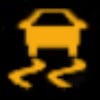
Stability Control Indicator This light means that the stability control has been disabled. The vehicle can be driven but keep in mind stability control is off. In most cases, this light comes on at the same time that the ABS light comes on. If that is the case, there is a high chance one of the wheel speed sensors is faulty. Use an ABS Scanner to read the fault codes from the ABS and traction modules. |
|

Electronic Power Steering Trouble This light means there is a problem with the electronic power steering. The steering wheel may be tough to turn. |
|

Turn Signal Indicator This light means the turn signals are on. If both turn signals are flashing, it is because the hazard lights are turned on. Turn off the hazard by pressing the orange triangle on the dashboard. |
|
|
Door Ajar This light means that one of the doors is open or is not closed completely. Pull over, park the vehicle and check to ensure all the doors are fully closed. |
|

Park Lamps ON Indicator This light means the parking lights have been turned on. Typically the low beam switch controls the parking lights. Turn the switch one more click to turn on the low beams. |
|
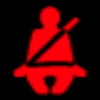
Seat Belt Reminder This light means that one or more passenger in the vehicle has not fastened the seat belt. |
|
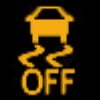
Stability Control OFF Indicator This light means that stability control has been turned off. Stability control may have been turned off because you pressed the button on the dashboard, or there is a problem with the system. |
|
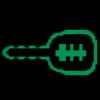 
Security Indicator This light means |
|
 
Hybrid Ready Indicator This light means |
|

Fog Lamp Indicator This light means |
|
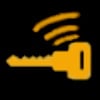
Keyless Start Fault Indicator This light means |
|
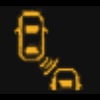
Blind Spot Warning Indicator This light means |
|

All Wheel Drive Trouble Indicator This light means |
|
|
Collision Mitigation Fault Indicator This light means |
|

Integrated Motor Assist Fault Indicator This light means |
|
|
Adaptive Cruise Control This light means that adaptive cruise control has been activated. |
|
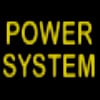
Power System Fault Indicator This light means |
|

Message Indicator This light means |
|
 
Cruise Control Indicator This light means that cruise control has been enabled. The vehicle will keep a constant speed. Cruise control will turn off if you press the brakes. Note that in this case, there is no adaptive cruise control. The vehicle will not keep a safe distance from the vehicle in front. |
|

Sport Mode Indicator This light means |
|

Auto Stop Indicator This light means |
|
|
EV ON Indicator This light means |
|
|
Hybrid Operation Indicator
|
|
|
Efficient Shift Indicator
|
|

Bed Lights ON Indicator
|
The purpose of many of these lights on a Honda is to inform the driver when a system is enabled.
A few of these lights indicate a problem or malfunction and inform the driver that that particular system has been disabled.

To find out what is wrong with these systems, use an All System Honda Scanner to read the fault codes from the corresponding module. Note that most OBD-II scanners can only reach check engine codes and cannot diagnose other systems such as airbags, ABS, traction control, etc.
We hope you find the Honda Dashboard Warning Lights and Symbols guide helpful. Check these troubleshooting and repair guides for more help on your Honda.

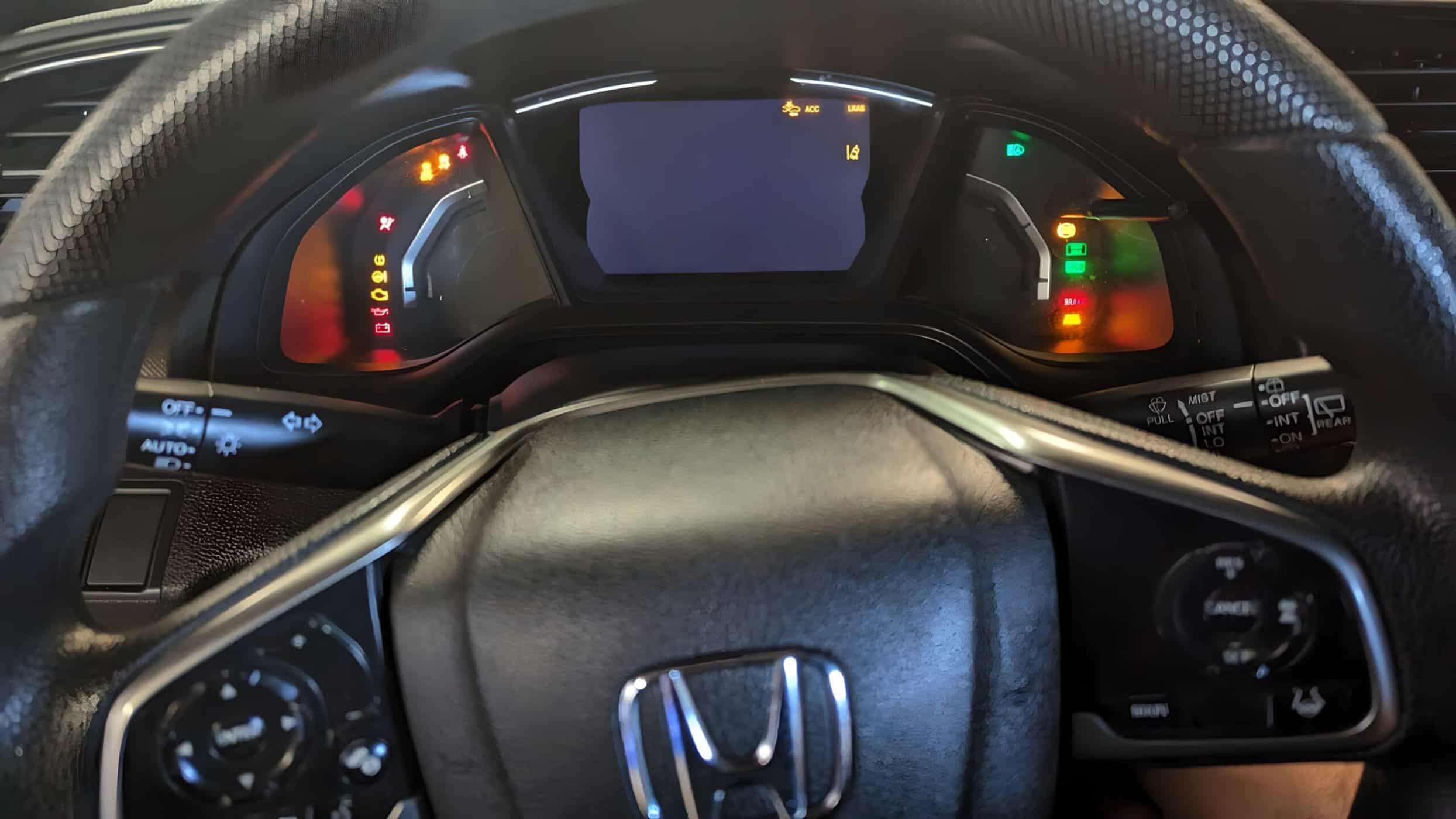
 Service Engine Soon Indicator
Service Engine Soon Indicator
